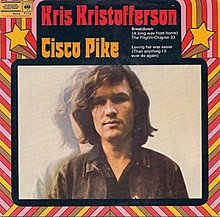Plot
After being arrested for drug dealing, singer Cisco Pike tries to pawn his guitar. The shop owner declines and Cisco returns home to find his demos have been rejected. He records more and tells his girlfriend, Sue, about his failure. Former customers keep calling him, seeking to buy drugs.
Detective Leo Holland has stolen a sizable quantity of high-grade marijuana from a Mexican gang and visits Cisco, who says he is trying to quit the drugs business. Holland arrests Cisco and then takes him to a garage, where he shows Cisco the stolen marijuana. Cisco then visits his lawyer, who confirms the garage belongs to a person called Betty Hall, apparently related to Holland. The lawyer advises Cisco to avoid Holland but shows further interest when Cisco mentions the high quality of the marijuana.
Holland finds Cisco, tells him he needs US$10,000, and gives him fifty-nine hours to sell the marijuana and, in return, tells Cisco he may keep any excess money and that he will alter his most recent arrest paperwork if the case goes to trial. Cisco accepts the deal and starts fragmenting the marijuana bricks, then contacts his former customers and proceeds with sales. After one bulk customer spots a solitary figure surveilling them with binoculars and takes off, Cisco confronts Holland, returns the bricks, and refuses to work with Holland any further, returning home to work on his demos. Holland is angry and visits Cisco's home; he beats Cisco and threatens to shoot him unless he continues the sales. Cisco agrees and Holland leaves.
Cisco visits his former competitor, Brother Buffalo, to try to sell the bricks in bulk and thus more quickly, and offers him twenty-five kg (55 lb) for a low price. Buffalo tells Cisco he will try to work out a deal with his associates. Cisco then visits his musician friend Rex, who is recording songs at a studio. Rex rejects the demos Cisco previously sent him. Instead, he asks him about the marijuana. Cisco, disappointed, meets Rex's manager to discuss the sale of drugs. Cisco rejects the manager's deal, then meets groupie Merna and leaves with her. They pick up Lynn on the way to her father's mansion.
After a brief sexual encounter with the two girls, Cisco continues selling drugs as tensions between him and his girlfriend escalate. He visits Rex's manager, who agrees to pay Cisco's price. The manager tells Cisco he will be paid in two days; Cisco starts destroying his office until the manager gives him a personal check. Another of Cisco's customers takes him to a major buyer, and Cisco realizes he and his customer are being set up by the police; they escape and are rescued by Sue. Cisco grows increasingly frustrated because he has not been contacted by his potential buyers and is still short of money. Sue finds Cisco's former bandmate, Jesse Dupre, taking a bath at their home. Affected by the state of Jesse's drug addiction, Cisco tells Sue he is being blackmailed by a police officer.
Jesse and Cisco travel to Sunset Strip, where they find Merna and Lynn. Merna introduces Cisco to a big buyer, who accepts Cisco's requested price. Later, at a party at Merna's house, Jesse overdoses with heroin and dies. Meanwhile, Holland enters Cisco's house uninvited and stays with Sue, who escapes, leaving Holland inside.
Cisco drives Jesse's body to his home in Venice and finds Sue sleeping in her van. Sue warns him of Holland and Cisco tells Sue of Jesse's death. Cisco leaves Jesse's corpse on a bench. Sue calls 9-1-1 to notify them about the body. Cisco confronts Holland and Sue tells Cisco she is leaving him. Cisco gives the money to a desperate Holland; they are interrupted by the arriving emergency services responding to the call about Jesse's body. Thinking they are coming after him, Holland starts shooting at them and is fatally shot. Sue returns home and Cisco drives away.
Background and production
Following the success of Easy Rider (1969), films depicting the ideals of the counterculture of the 1960s spawned the New Hollywood movement in film. Releases in this style which met a good audience reception in 1970 include Getting Straight , The Strawberry Statement and Five Easy Pieces .
UCLA graduate and Los Angeles–born Bill Norton wrote a draft of a story depicting the relationship between the contemporaneous music and drug scenes. [2] Norton had worked as a director on short films for UCLA's film school, television commercials and rock-and-roll shorts. Norton came into contact with producer Gerald Ayres of Columbia Pictures and pitched the project to him. Ayres then forwarded the script to his friend Robert Towne, who reworked the story and further developed the characters. [2]
Towne added the character of the corrupt police officer who forces Cisco Pike back into the drug world and further expanded the role of Cisco's girlfriend. Norton initially opposed the casting of Karen Black but relented when the studio imposed it as a condition for producing the film. Columbia felt Black's recent Best Supporting Actress nomination in the Academy Awards for Five Easy Pieces would help the promotion of the release. [4] Cisco Pike is Norton's directorial debut.
Kris Kristofferson had made his film debut with a cameo appearance on Dennis Hopper's The Last Movie , which was unreleased at the time of Cisco Pike's production. After his debut performance as a singer at the Los Angeles nightclub The Troubadour, Kristofferson was approached by Fred Roos, the casting director of Five Easy Pieces, who invited him to audition for his film debut for a leading role on Two-Lane Blacktop . Kristofferson, who was signed to Columbia Records, arrived to the appointment intoxicated and left. Kristofferson was next offered Norton's script by Columbia. His peers encouraged him to reject the role and to take acting lessons instead, but he accepted the part, and later said; "I read the script and I could identify with this cat" and that acting is "understanding a character, and then being just as honest as you can possibly be". Gene Hackman accepted the role because he saw it as an opportunity to work in California, close to his wife at the time, Faye Maltese. Kristofferson's friend Harry Dean Stanton also joined the production. Supporting roles included Warhol superstar Viva and Joy Bang.
Filming began on November 2, 1970, initially under the working title Dealer, which was changed to Silver Tongued Devil. Ayres wrote some scenes of the film, and the script and storyline were altered while filming progressed. Editor Robert Jones contributed the ending of the story. Cisco Pike was mostly filmed on location around Venice Beach and its boardwalk. [4] Sunset Strip was also used as a location, and some indoor scenes were filmed at The Troubadour and The Source Restaurant. The mansion of silent-film-era star Pola Negri was used as the home of Viva's character. Filming was affected by intense seasonal rain but the schedule was kept to by shooting in up to three locations daily. During the official post-production process, new scenes were written and filmed partly in New York City. [4]
Filming was over by December 1970. A crew of thirty-five took part in the production, which was one of the smallest Columbia Pictures had used at that point. Norton described the sets to Action (the Directors Guild of America magazine) as "claustrophobic" and said the finished film did not "play on the screen like it played in [his] mind". Post-production was finished by early 1971; Cisco Pike cost less than US$800,000 to produce.
Release and reception
Cisco Pike opened to a limited release on January 14, 1972, two years after its filming. Initial reviews were poor and it was a commercial failure at the box office. Released during the beginning of the war on drugs, Life described the approach of the movie studios and their depictions of drug issues in the United States as wrong. The publication said that due to the ongoing economic crisis, audiences were not open to "downers" and attributed the film's three changes of title to damage control. The article described the positive reception that comedy movies depicting drug culture had in comparison with dramatic ones.
The New York Times gave Cisco Pike a negative review and concluded, "there isn't much to say about it". Newsday said the film "takes itself very seriously", called the script "limited", and criticized Norton for having "no noticeable talent for creating three-dimensional characters". The Washington Post called the plot and the "film's virtue" "mundane". Variety called Cisco Pike "surprisingly good" and Kristofferson "an excellent formal acting debut". Critic Roger Ebert rated it with three stars out of four and wrote that Kristofferson's acting "holds it together". Rolling Stone delivered a favorable review; the writer called Kristofferson "as good an actor, as he is a singer". Los Angeles Free Press considered the filming "faultless". [18]
New York Daily News rated it with two-and-a-half stars out of five. It described the inexperience of Norton, Ayres and Kristofferson and the "looseness of presentation" and "meandering story". [19] The Boston Globe opened its review by calling the film "sluggish", while it suggested that Hackman's presence on the screen was "needed", but concluded that his character "doesn't have enough to do". The reviewer described the scenery of the movie as "shot with an eye for the sleazy and depressed", and he felt that it leaned "too long on background mood and too short on dialogue and action upfront". The review praised Kristofferson's singing, while added that his acting lacked "dimension". As for Black, it concluded "her talents are more or less wasted".
Austin American-Statesman defined it as "one of those low-level, low-life, sex-and-drugs epics" that has "an occasional moment of perverse interest", but "great hunks of pure tedium". Comparing Kristofferson's film debut to those of Mick Jagger in Performance and James Taylor on Two-Lane Black Top, The Philadelphia Inquirer concluded "(he) can't act either". Meanwhile, The San Francisco Chronicle stated that Cisco Pike was "beautifully made", and San Francisco Examiner called it a "gripping suspense thriller". Atlanta Constitution praised Kristofferson for a "surprisingly able job".
Legacy
Cisco Pike was re-released in March 1975 to a short theater run; according to an article in the Los Angeles Times , most of the copies of the film had by then been destroyed. Reviewer Charles Champlin saw the film's depictions as an "accurate slice of social history". After Cisco Pike finished its run in theaters, Columbia Pictures did not license its broadcast for television and it was never officially released on VHS, though bootleg recordings circulated and it was screened in theaters that still possessed original copies. The film was screened at the American Cinematheque in Los Angeles, California in 2000 as part of a retrospective titled Celebrating the New Hollywood of the 1960s and 1970s. The American Cinematheque screened Cisco Pike again in 2005 as part of a retrospective titled The Return of Movies Not Available on Video. The film was released for the first time on DVD in 2006; Los Angeles Times favored it, accentuating its place in history where "the optimism of the 1960s slips into ... disappointing loneliness". Critic Sean Howe said the movie lacked the exposure it needed to turn it into a cult classic. Nevertheless, Cisco Pike was listed by Danny Peary as one of the emerging cult classics at the last page of his 1981 book Cult Movies .
The website AllMovie gave it three-and-a-half stars out of five; reviewer Fred Beldin said the film is a "feature-length advertisement" for Kristofferson's next album release but concluded it "has plenty to offer with its eccentric pacing, great cast, and period ambiance". Reelfilm gave Cisco Pike two-and-a-half stars out of four and called it "fairly decent". It partly favored Norton's non-linear story approach but said the film is "overwhelmingly meandering and random".
In November 2013, the West Hollywood theater Cinefamily hosted a month-long screening of Kristofferson's movies, beginning with Cisco Pike on November 1. The theater held a question-and-answer session with Kristofferson, Stanton and Norton in attendance. Norton described Cisco Pike as his version of La Dolce Vita "set in L.A". Before the film screened, Kristofferson and Stanton performed part of the soundtrack for the audience. The Hollywood Reporter noted the movie gained a cult following and praised Norton for a "clean and defined" plot.
In the third volume of Marvel Comics' Rawhide Kid , the main character's enemy is named after the film and his outfit is called "The Cisco Pike Gang". Marvel's Cisco Pike appears in numbers one to five and inhabits the fictional universe Earth-616.

Eugene Allen Hackman is an American retired actor and novelist. In a career that spanned more than six decades, he received two Academy Awards, two BAFTA Awards, four Golden Globes, a Screen Actors Guild Award, and the Silver Bear. Hackman's two Academy Award wins included one for Best Actor for his role as Jimmy "Popeye" Doyle in William Friedkin's acclaimed thriller The French Connection (1971) and the other for Best Supporting Actor for his role as "Little" Bill Daggett in Clint Eastwood's Western film Unforgiven (1992). His other Oscar-nominated roles were in Bonnie and Clyde (1967), I Never Sang for My Father (1970), and Mississippi Burning (1988).
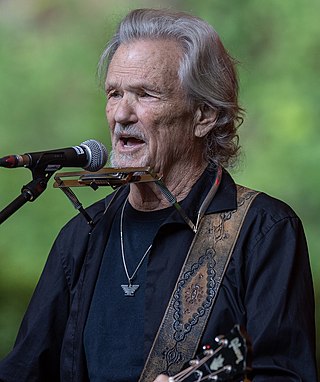
Kristoffer Kristofferson is an American retired country singer, songwriter, and actor. Among his songwriting credits are "Me and Bobby McGee", "For the Good Times", "Sunday Mornin' Comin' Down", and "Help Me Make It Through the Night", all of which were hits for other artists.

Frank Romer Pierson was an American screenwriter and film director.

"Me and Bobby McGee" is a song written by American singer-songwriter Kris Kristofferson and originally performed by Roger Miller. Kristofferson and Miller are distant cousins in the Chenoweth family tree surname. Fred Foster shares the writing credit, as Kristofferson wrote the song based on a suggestion from Foster. A posthumously released version by Janis Joplin topped the U.S. singles chart in 1971, making the song the second posthumously released No. 1 single in U.S. chart history after "(Sittin' On) The Dock of the Bay" by Otis Redding. Gordon Lightfoot released a version that reached number 1 on the Canadian country charts in 1970. Jerry Lee Lewis released a version that was number 1 on the country charts in December 1971/January 1972 as the "B" side of "Would You Take Another Chance On Me." Billboard ranked Joplin's version as the No. 11 song for 1971.
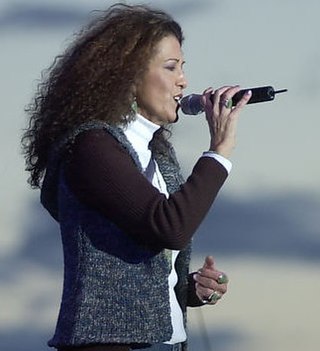
Rita Coolidge is an American recording artist. During the 1970s and 1980s, her songs were on Billboard magazine's pop, country, adult contemporary, and jazz charts, and she won two Grammy Awards with fellow musician and then-husband Kris Kristofferson. Her recordings include "(Your Love Keeps Lifting Me) Higher and Higher," "We're All Alone", "I'd Rather Leave While I'm in Love", and the theme song for the 1983 James Bond film Octopussy: "All Time High".
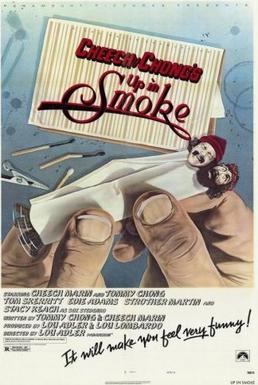
Up in Smoke is a 1978 American comedy film directed by Lou Adler and starring Cheech Marin, Tommy Chong, Edie Adams, Strother Martin, Stacy Keach, and Tom Skerritt. It is Cheech & Chong's first feature-length film.

French Connection II is a 1975 American neo-noir action thriller film starring Gene Hackman and directed by John Frankenheimer. It is a sequel to the 1971 film The French Connection. The film continues the story of the central character, Detective Jimmy "Popeye" Doyle, who travels to Marseille in order to track down French drug-dealer Alain Charnier, played by Fernando Rey, who escaped at the end of the first film. Hackman and Rey are the only returning cast members.

Jesse Edwin Davis III was a Native American guitarist. He was well regarded as a session artist and solo performer, was a member of Taj Mahal's backing band and played with musicians such as Eric Clapton, John Lennon, and George Harrison. In 2018, he was posthumously inducted into the Native American Music Hall of Fame at the 18th Annual Native American Music Awards. Davis was an enrolled citizen of the Kiowa Indian Tribe of Oklahoma with Comanche, Muscogee, and Seminole ancestry.

The Taker/Tulsa is a studio album by American country music artist Waylon Jennings, released in 1971 on RCA Nashville. The LP rose to #12 on the Billboard country albums chart while the single "The Taker" was a Top 5 hit single.

A Star Is Born is a 1976 American musical romantic drama film directed by Frank Pierson, written by Pierson, John Gregory Dunne, and Joan Didion. It stars Barbra Streisand as an unknown singer and Kris Kristofferson as an established rock and roll star who fall in love, only to find her career ascending while his goes into decline. A Star Is Born premiered at the Mann Village Theater on December 18, 1976, with a wide release by Warner Bros. the following day. A huge box office success, grossing $80 million on a $6 million budget in North America, the film became the 2nd highest-grossing that year. Reviews praised its performances and musical score, but criticized the screenplay and runtime. At the 49th Academy Awards, the film won Best Original Song for its love theme "Evergreen".
Tom Jans was an American folk singer-songwriter and guitarist from San Jose, California. He is perhaps best known for his song "Loving Arms", which was recorded initially by Kris Kristofferson and Rita Coolidge, and notably covered by Dobie Gray, Elvis Presley and Petula Clark.

The Silver Tongued Devil and I is the second studio album recorded by singer-songwriter Kris Kristofferson. It was produced by Fred Foster, released in July 1971 on Monument Records and followed his critically acclaimed debut Kristofferson.
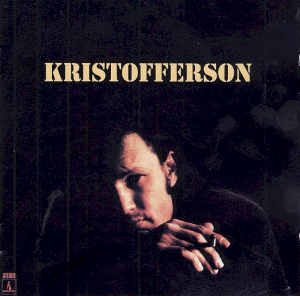
Kristofferson is the debut album of singer-songwriter Kris Kristofferson, which was produced by Fred Foster and released in June 1970 by Monument Records. After working a series of temporary jobs, Kristofferson became a helicopter pilot for oil companies in the Gulf of Mexico. While he worked, he wrote songs and pitched them to singers around Music Row in Nashville, Tennessee during his free time. Kristofferson's songs were recorded by country singers Roy Drusky, Jerry Lee Lewis and Roger Miller and later he persuaded Johnny Cash to try his material. Cash invited Kristofferson to perform with him at the Newport Folk Festival, after which Fred Foster signed Kristofferson to Monument Records as a songwriter and recording artist.

The Last Movie is a 1971 metafictional drama film directed and edited by Dennis Hopper, who also stars as a horse wrangler named after the state of Kansas. It is written by Stewart Stern, based on a story by Hopper and Stern, and stars an extensive supporting cast including Stella Garcia, Don Gordon, Peter Fonda, Julie Adams, Sylvia Miles, Samuel Fuller, Dean Stockwell, Russ Tamblyn, Tomas Milian, Toni Basil, Severn Darden, Henry Jaglom, Rod Cameron, and Kris Kristofferson & Michelle Phillips in their film debuts. The plot follows a disenfranchised stuntman (Hopper), who begins a filmmaking-centric cargo cult among Peruvian natives after going into self-imposed exile.
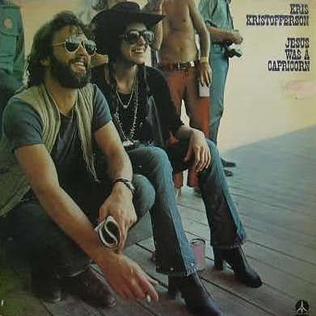
Jesus Was a Capricorn is the fourth album by Kris Kristofferson, released in 1972 on Monument Records. The album cover pictures Kristofferson and his soon-to-be wife Rita Coolidge. "Why Me" reached #1 on the Country singles charts.

Shake Hands with the Devil is the ninth solo album by Kris Kristofferson, released in 1979 on Monument Records. Several of the songs on the album were written by Kristofferson years before its release.
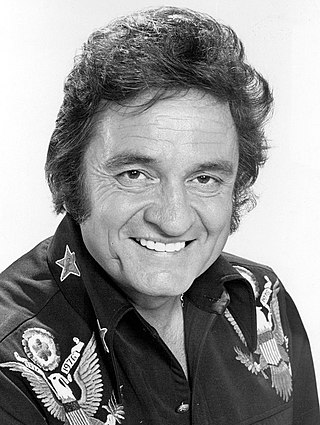
John R. Cash was an American country singer-songwriter. Most of Cash's music contains themes of sorrow, moral tribulation, and redemption, especially songs from the later stages of his career. He was known for his deep, calm bass-baritone voice, the distinctive sound of his Tennessee Three backing band characterized by train-like chugging guitar rhythms, a rebelliousness coupled with an increasingly somber and humble demeanor, free prison concerts, and a trademark all-black stage wardrobe, which earned him the nickname the "Man in Black".
Bill L. Norton is an American film director, writer and producer. Among many projects, he is the writer-director of Cisco Pike and More American Graffiti.
Gerald Ayres was an American film studio executive, producer and screenwriter. He is known for his work as producer of The Last Detail (1973) starring Jack Nicholson and as writer of Rich and Famous (1981) the last film directed by George Cukor.

American singer-songwriter and actor Kris Kristofferson has been in numerous films, television films, television series and video games. He started acting in the 1970s, appearing in the films The Last Movie (1971), Cisco Pike (1972), Pat Garrett and Billy the Kid (1973), Blume in Love (1973), Alice Doesn't Live Here Anymore (1974), Bring Me the Head of Alfredo Garcia (1974) and Vigilante Force (1976), before starring in the 1976 film A Star Is Born as John Norman Howard, which earned him a Golden Globe Award for Best Actor - Motion Picture Musical or Comedy. He went on to co-star in Stagecoach (1986) and star in films such as Semi-Tough (1977), Convoy (1978), Heaven's Gate (1980), Flashpoint (1984), Big Top Pee-wee (1988), and Welcome Home (1989).

